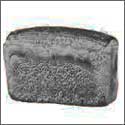
Bakers shops/bakeries in World War Two UK and its aftermath

Bakers and bakeries did a lot to hold communities together during WW2. Much was obvious like making and selling bread in difficult circumstances - and bread was an essential food. Others, though, were coincidental like the camaraderie developed while waiting in the seemingly endless queues at bakery shops, and still others were going the extra mile to help people. This page elaborates on all these and describes the background to them. Highlights are the firsthand recollections from customers at the time.
____
By the webmaster: her early recollections with additional firsthand contributions
Baker's wares in WW2 compared with before the war
Bakers shops were not particularly exciting places when I was a child in WW2 Britain. Earlier in the century and before the war, so I was repeatedly told, bakers shops had been full of different types of bread, cakes and biscuits to tempt anyone and everyone. Being a child, I never experienced this variety, so didn't miss it, but for the adults, the shortages and lack of variety must have been very hard. For a start, there was only one type of bread, called the 'National Loaf', and very little else. Although bread wasn't rationed to the general public during the war, there were severe shortages, and it did become rationed after the war when the shortages were even more severe.
There were no cakes on sale, or if some were when the right ingredients occasionally became available, they were under the counter, kept for favoured customers.
Bread buns
As a child in rural Cambridgeshire in the 1940s, I used to walk the mile or so to and from school, and on the way back I would stop at our local bakers to buy my treat. It was called a 'sticky bun' and cost one penny [i.e one two hundred and fortieth of a pound.] Then I would sit and eat it by the level crossing and watch the trains.
The bun was just a lump of bread, but it had been dipped into some sort of sugar solution which made the outside sweet. It wasn't iced and was really very plain indeed by today's standards, but at the time I loved it.
Neil Cryer
Baker's skills in the shortages and air raids
Bakers were subject to government restrictions regarding production quotas, pricing, and quality control, and they had to use their skills to make the best use of whatever ingredients they were allowed. Bakers successfully coped with this, finding substitutes and developing alternative recipes, even though quality inevitably suffered. There were also skills in managing to produce the public's staple food during air raids and often in bombed facilities. So highly were these skills valued that bakers were given reserved occupations status which meant that they were exempt from call-up into the forces.
The unsold bread
Any left-over bread would be sold the next day as 'stale bread'. Once it got too hard to sell, it would go back to the bakery to be made into bread pudding or sold as 'crumb' to butchers to bulk out their sausages. My mother knew all the tricks of the bread trade.
Peter Johnson
Queues at bread shops
I remember as a small child queuing up with my mother for our bread, although I didn't know at that time that it was only for the National Loaf. There was always a long queue outside the shop and inside was a fight to get served. This was in spite of the shop having several assistants and doing deliveries.
I suspect that treats like the bread buns were only available if you were lucky enough to buy them on a first come first served basis and that they quickly sold out. Perhaps that was why there were so many queues.
Women chatted in the queues which probably did a lot of good for their mental health what with their menfolk away in the forces and the worry of not knowing if they would manage to get enough food to feed their families whether the German blitz would allow them to wake up the next morning.
Bakers' shop fronts in WW2
I don't have a photo of a baker's shopfront in the 1940s. If you do, I would be grateful for a copy. I suspect that it would show shelves of national loaves alongside pictures - just pictures - of more exciting things.
Our bakers in Edgware was one of a line of typical suburban shops. It was called Brills, so I suppose it was run by a Brills or Brill family.
Bakers' deliveries
In the late 1940s I had a bread round between Edgware and Burnt Oak. It was a Saturday morning job and paid the grand sum of 2 shillings - a fortune for me at the age of 9-10. [2 shillings of old money converted to decimal currency in 1971 as just 10p.]
A small green van, labelled Avery Bread Co, would pull up outside the Gaumont cinema and I would get in. Then the old geezer who was the driver would start driving round the streets. He would pull up outside each house on the round and yell out to me what bread I was to deliver there.
Dave Miller
There are photos and information on bakery deliveries earlier in the century on another page.
Bakers' care of the community
Bakers would loan out cake decorations to grateful customers so that they could make their children's parties look as special as possible with the meagre ingredients available.
Our baker was particularly helpful for our neighbour's daughter's wedding. He lent a cardboard cake mockup with painted plaster 'icing and piping' to put over a very minimal sponge cake. My mother said that the result looked just like pre-war.
Mavis Brownwood
sources: early 20th century material
sources: ww2 home front and other material
contact
the webmaster/author/researcher/editor
privacy policy
















